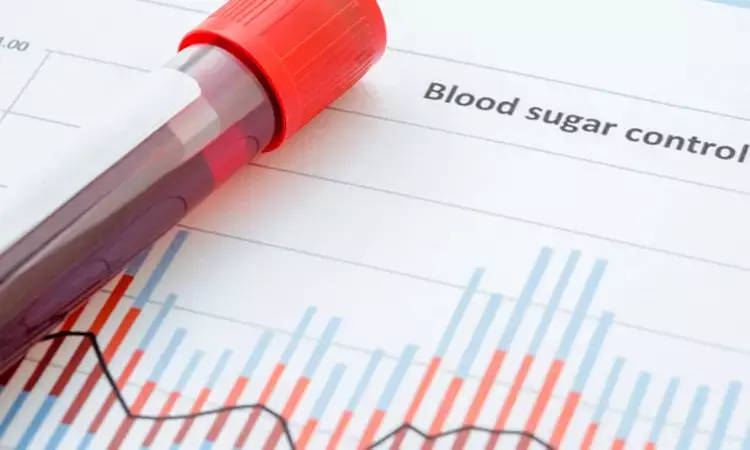- Home
- Medical news & Guidelines
- Anesthesiology
- Cardiology and CTVS
- Critical Care
- Dentistry
- Dermatology
- Diabetes and Endocrinology
- ENT
- Gastroenterology
- Medicine
- Nephrology
- Neurology
- Obstretics-Gynaecology
- Oncology
- Ophthalmology
- Orthopaedics
- Pediatrics-Neonatology
- Psychiatry
- Pulmonology
- Radiology
- Surgery
- Urology
- Laboratory Medicine
- Diet
- Nursing
- Paramedical
- Physiotherapy
- Health news
- Fact Check
- Bone Health Fact Check
- Brain Health Fact Check
- Cancer Related Fact Check
- Child Care Fact Check
- Dental and oral health fact check
- Diabetes and metabolic health fact check
- Diet and Nutrition Fact Check
- Eye and ENT Care Fact Check
- Fitness fact check
- Gut health fact check
- Heart health fact check
- Kidney health fact check
- Medical education fact check
- Men's health fact check
- Respiratory fact check
- Skin and hair care fact check
- Vaccine and Immunization fact check
- Women's health fact check
- AYUSH
- State News
- Andaman and Nicobar Islands
- Andhra Pradesh
- Arunachal Pradesh
- Assam
- Bihar
- Chandigarh
- Chattisgarh
- Dadra and Nagar Haveli
- Daman and Diu
- Delhi
- Goa
- Gujarat
- Haryana
- Himachal Pradesh
- Jammu & Kashmir
- Jharkhand
- Karnataka
- Kerala
- Ladakh
- Lakshadweep
- Madhya Pradesh
- Maharashtra
- Manipur
- Meghalaya
- Mizoram
- Nagaland
- Odisha
- Puducherry
- Punjab
- Rajasthan
- Sikkim
- Tamil Nadu
- Telangana
- Tripura
- Uttar Pradesh
- Uttrakhand
- West Bengal
- Medical Education
- Industry
Glucose Variability During Early Course Of Acute Pancreatitis Can Predict New-Onset Of Diabetes

Diabetes of the exocrine pancreas constitutes around 1.6% of all new-onset diabetes in adults. Its most common subtype, post-pancreatitis diabetes mellitus, is associated with a 13% higher risk of all-cause mortality than type 2 diabetes. Acute pancreatitis (AP) is the largest contributor to diabetes of the exocrine pancreas.
In a recent study, researchers reported that glucose variability (GV) during hospitalisation for acute pancreatitis accurately predicts future risk of developing deranged glucose metabolism, including new-onset diabetes after acute pancreatitis. The study findings were published in the United European Gastroenterology Journal on February 20, 2022.
Identification of high-risk individuals at the time of recovery from an attack of AP is of importance and it is one of the core elements of the 'holistic prevention of pancreatitis' framework. However, there is no accurate predictor at the time of hospitalisation for AP to identify individuals at high risk for new-onset diabetes. Therefore, Dr Maxim S. Petrov and his team conducted a first prospective longitudinal study to investigate the accuracy of indices of glucose variability (GV) during the early course of AP in predicting the glycated haemoglobin (HbA1c) trajectories during follow-up.
In a prospective longitudinal cohort study, the researchers included 120 patients without diabetes at the time of hospitalisation for AP. They measured the fasting blood glucose regularly over the first 72 h of hospital admission. End-points assessed were HbA1c trajectories - high-increasing, moderate-stable, normal-stable - over two years of follow-up. They evaluated the associations between several common GV indices and the HbA1c trajectories using multinomial logistic regression analyses. They further conducted a sensitivity analysis constrained to patients with non-necrotising AP.
Key findings of the study:
- Upon analysis, the researchers found that all patients in the high-increasing HbA1c trajectory group had new-onset diabetes at 18 and 24 months of follow-up.
- They noted that the glycaemic lability index had the strongest significant direct association (adjusted odds ratio = 13.69) with the high-increasing HbA1c trajectory.
- They found that high admission blood glucose, a standard deviation of blood glucose, and average real variability significantly increased the patients' odds of taking the high-increasing HbA1c trajectory by at least two times.
- They noted that all GV indices except for blood glucose had a significant direct association (adjusted odds ratio = 1.46; p = 0.034) with the moderate-stable HbA1c trajectory.
- They mentioned that the above findings did not change materially in patients with non-necrotising AP alone.
The authors concluded, "High GV during the early course of AP gives a prescient warning of worsening HbA1c pattern and new-onset diabetes after hospital discharge. Determining GV during hospitalisation could be a relatively straightforward approach to early identification of individuals at high risk for new-onset diabetes after AP".
For further information:
DOI: https://doi.org/10.1002/ueg2.12190
Medical Dialogues Bureau consists of a team of passionate medical/scientific writers, led by doctors and healthcare researchers. Our team efforts to bring you updated and timely news about the important happenings of the medical and healthcare sector. Our editorial team can be reached at editorial@medicaldialogues.in.
Dr Kamal Kant Kohli-MBBS, DTCD- a chest specialist with more than 30 years of practice and a flair for writing clinical articles, Dr Kamal Kant Kohli joined Medical Dialogues as a Chief Editor of Medical News. Besides writing articles, as an editor, he proofreads and verifies all the medical content published on Medical Dialogues including those coming from journals, studies,medical conferences,guidelines etc. Email: drkohli@medicaldialogues.in. Contact no. 011-43720751


